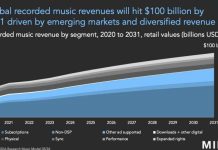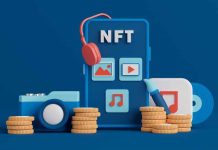The rise of music streaming services has changed the landscape of the music industry. It is transforming music distribution and how artists connect with their audiences. Platforms like Spotify, Apple Music, and Amazon Music have made music more accessible than ever. They offer listeners a vast library of tracks at their fingertips. For artists, these services open up new opportunities for exposure and engagement, but they also present significant challenges. This article explores the evolution of music streaming services. It analyzes their impact on music distribution, the artist-audience relationship, and the future of the music industry.
The Transformation of Music Distribution
Before streaming, music distribution was controlled mainly by record labels. These labels acted as gatekeepers, deciding which artists and albums would reach the market. Physical sales, such as CDs and vinyl records, were the primary means of music consumption. The distribution process was time-consuming and expensive. However, digital platforms and streaming services revolutionized this model.
Streaming services have democratized music distribution. They allow artists to upload their music directly to platforms where millions of listeners can access it. This shift reduces reliance on record labels and provides independent artists with tools to reach global audiences. As a result, streaming has become the dominant method of music consumption, with billions of streams occurring daily across various platforms.
The Impact on Artist-Audience Connections
Streaming services have transformed the music industry by reshaping the relationship between artists and their audiences. These platforms offer tools that allow artists to engage with fans in new ways. Features such as curated playlists, artist profiles, and direct messaging enable musicians to build and maintain a connection with their listeners. This fosters a sense of community and loyalty.
For emerging artists, streaming services provide a crucial platform to gain exposure and build a fanbase. Through algorithm-driven recommendations and playlist placements, new artists can reach audiences they might not have accessed otherwise. This level of accessibility is essential in an industry where breaking through the noise can be challenging.
For established artists, streaming offers a way to stay relevant and connected with fans. The traditional album cycle has become less central to music promotion. By regularly releasing singles, remixes, and other content, artists can keep their audience engaged and maintain a consistent presence in the digital space.
The Advantages and Challenges of Streaming for Artists
While streaming services offer numerous advantages, they also present challenges for both emerging and established artists. One primary benefit is the potential for global reach. Unlike traditional distribution methods, which were often limited by geographic and financial constraints, streaming allows artists to share their music with a worldwide audience instantly.
Additionally, streaming services provide artists with valuable data insights. These include listener demographics and engagement metrics, which can inform marketing strategies and touring plans. This data-driven approach enables artists to tailor their content and outreach efforts more effectively, leading to stronger fan relationships.
However, the financial model of streaming presents challenges, especially for artists who rely on music sales as their primary income source. The revenue generated from streaming is typically lower than from physical or digital album sales. The per-stream payout can be minimal, especially for artists without massive followings. This has led to widespread debate about the fairness of streaming royalties and the need for more equitable compensation structures.
Furthermore, the sheer volume of music available on streaming platforms can make it difficult for artists to stand out. With millions of tracks competing for attention, even the most talented musicians may struggle to gain visibility without substantial promotional efforts.
The Future of Music Streaming and the Industry
As streaming continues to dominate the music industry, its influence is likely to grow. The convenience and accessibility of streaming have made it the preferred method of music consumption for many listeners. This trend shows no signs of slowing down. However, the industry must address the challenges that streaming presents, particularly regarding artist compensation and content discovery.
Looking ahead, streaming services may evolve to offer more personalized and immersive experiences. These could include virtual concerts and enhanced interactive features. Additionally, emerging technologies like artificial intelligence and blockchain could revolutionize how music is distributed and monetized. This could lead to new revenue streams for artists.
For the music industry, the continued rise of streaming presents both opportunities and challenges. While the democratization of distribution has empowered artists and given fans unprecedented access to music, it has also disrupted traditional business models. This raises important questions about the future of artist compensation and industry sustainability.
Conclusion
Music Industry Weekly recognizes that the evolution of music streaming services has transformed the distribution of music and the relationship between artists and their audiences. While these platforms offer significant advantages, such as global reach and direct fan engagement, they also present challenges regarding revenue and visibility. As the music industry adapts to the digital age, streaming will play a central role in shaping its future. It offers both new opportunities and potential obstacles for artists and industry professionals alike.
For more insights into the impact of streaming on the music industry, check out our analysis of artist revenue in the streaming era and the future of digital music distribution.







